Sony has officially revealed the PSVR 2 controllers that will accompany its next generation of PSVR for the PS5 - and we can't wait to get our hands on them, quite literally. The Japanese company also shared the official name for its new peripheral at CES 2022 , the PlayStation VR2 Sense controller.
Sony confirmed PSVR 2 was officially in the works back in February 2021 and has slowly revealed more information over time. We found out all about the PSVR 2's specs at CES 2022, and we've finally been shown the PSVR 2's headset design . The PSVR 2 controllers look to enhance VR immersion with built-in haptic feedback, adaptive triggers, and finger-touch detection while sporting a more orb-like design that should make them more comfortable to hold. They also sport a similar design to that of the DualSense controller and Pulse 3D Headset, with rounded edges and a white and black aesthetic.
In other words, it's time for the PlayStation Move controller to move over; there's a new controller in town. Want to know more? Read on for everything we know about the PSVR 2 controllers.
PSVR 2 controllers: cut to the chase
PSVR 2 controllers release date and price
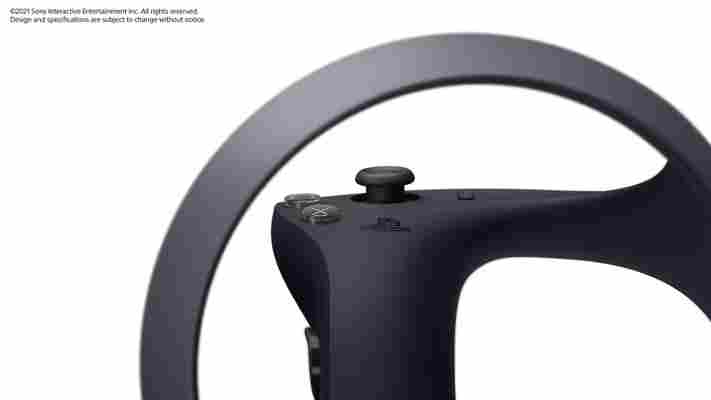
Sony revealed the PSVR 2 controllers in a blog post in March 2021, just a month after the company published another surprise blog post confirming that the next generation of PSVR is in the works - which is expected to work exclusively with PS5 hardware. We also know the peripheral is now officially called the PlayStation VR2 Sense controller. The PSVR 2 controllers will likely launch alongside the PSVR 2 hardware.
If Sony mostly allocates its manpower to PS5 production (which seems likely given demand), then the PSVR 2 could launch much later than the console’s release date - perhaps even years later. PlayStation VR launched three years after the PS4, after all. But the relative success of PSVR means that Sony is likely to expedite the process this time around.
According to a report by Bloomberg , sources suggest Sony is aiming for a Christmas 2022 release date for PSVR 2. However, Sony hasn't confirmed when exactly we'll get our hands on its successor to PSVR and its controllers but is working on a late 2022 release date.
So how much are we expecting PSVR 2 controllers to cost? We're expecting at least one pair to be bundled in with the hardware, but Sony will likely offer, much like with the PS Move controllers, standalone pairs for purchase, too. PlayStation Move controllers were initially available to purchase alone for £35 / $35, or with the PlayStation Eye camera for £50 / $50. The Navigation controller (the equivalent to the Wii's nunchuck) attachment was an extra £25 / $25. Given that the VR controllers share many technical elements with the PS5 DualSense pads, which cost $69.99 / £59.99 / AU$109, these VR gamepads could get pricey.
It's unclear whether the PSVR 2 controllers will come with additional attachments, but we expect that the price of the controllers alone will be slightly more than $35, with a pair costing more again, given the tech built-in. Sony hasn't confirmed pricing at this time so this is still speculation at this point.
PSVR 2 controllers design
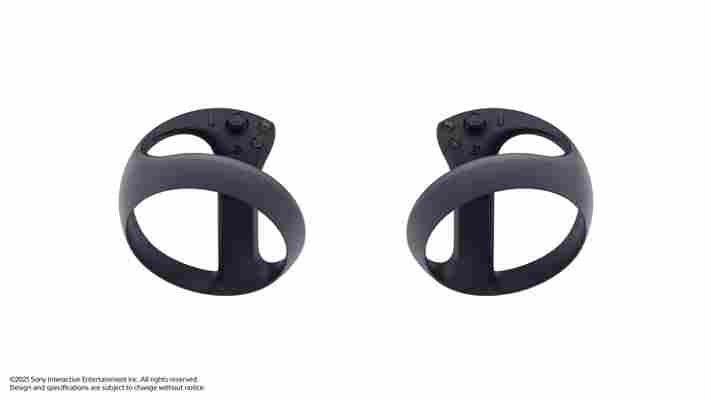
The PSVR 2 controllers look considerably different to the PlayStation Move controllers. The controllers are black and have an orb-like shape which Sony claims makes them feel more natural to hold while offering a "high degree of freedom". Sony also claims that this design means there are no constraints with how players move their hands, allowing developers to create "unique gameplay experiences".
In addition, Sony has said that the controllers are built with ergonomics in mind, taking into account varying hand sizes and insights from previous PlayStation controllers, meaning that the controllers should feel well-balanced and comfortable to hold.
From the images we've seen, each PSVR 2 controller has two buttons (the left has Triangle and Square and the right has Circle and X), an analog stick, a "grip" button (L1 or R1, can be used to pick up in-game objects) and either an Options button (right controller) or Share button (left controller). Each controller also comes with an adaptive trigger and finger-touch detector (more on that below) and what appears to be a charging port on the bottom. A wrist strap can also be seen in some images.
PSVR 2 controllers features
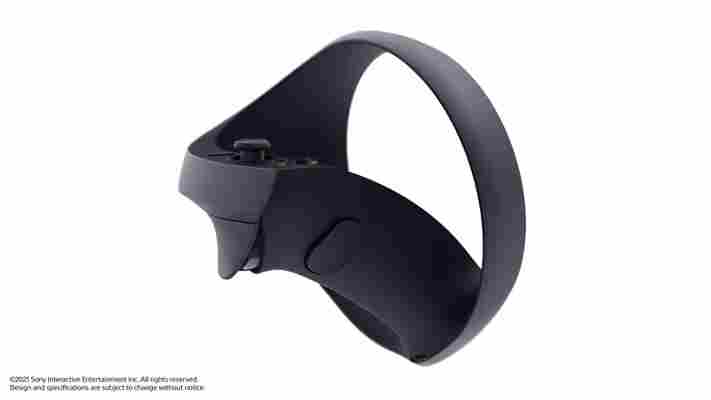
The PSVR 2 controllers look to improve immersion with plenty of new features, some which we've seen in the DualSense PS5 controller , which were absent from the PS Move controllers.
The PSVR 2 controllers have adaptive triggers, similar to the DualSense, which add palatable tension when pressed. So, for example, when you draw a bow in a game, you should feel the tension of the string in the trigger, making it feel more realistic.
Another feature the PSVR 2 controllers take from the DualSense is haptic feedback. Haptic feedback uses touch to communicate with players, allowing you to feel sensations from a game through the controller itself. So, for example, in Astro's Playroom for PS5, when you're walking through sand, you can feel the texture difference reverberated through the DualSense controller.
The PSVR 2 controllers also have finger touch detection, allowing the controllers to detect where your fingers are without having to press a button. “This enables you to make more natural gestures with your hands during gameplay,” says Hideaki Nishino , head of platform planning and management at PlayStation.
The controllers will be tracked by the new PSVR 2 headset through a tracking ring across the bottom of the controller.
PSVR 2 controller specs
At CES 2022, Sony revealed the official specs of the PlayStation VR2 Sense controller. We'll have to wait until we go hands on determine things like battery life, but here's what you can expect.
| PSVR 2 controller specs | |
|---|---|
| Buttons [Right] | PS button, Options button, Action buttons (Circle/Cross), R1 button, R2 button, Right Stick / R3 button |
| Buttons [Left] | PS button, Create button, Action buttons, (Triangle/Square), L1 button, L2 button, Left Stick / L3 button |
| Sensing / Tracking | Motion Sensor: Six-axis motion sensing system (three-axis gyroscope + three-axis accelerometer), Capactive Sensor: Finger Touch Detection, IR LED: Position Tracking |
| Feedback | Trigger Effect (on R2 / L2 button), Haptic Feedback (by single actuator per unit) |
| Port | USB Type-C Port |
| Communication | Bluetooth Ver5.1 |
| Battery | Type: Built-in Lithium-ion Rechargeable Battery |
PSVR 2 controllers: what we want to see
A decent battery life Despite the upgrade to a Micro USB connection in 2017, the batteries inside the PS Move controllers are still woeful, so this time around we would love to be able to use PSVR 2 controllers for an extended period of time before having to juice them up. Whether this will happen still remains uncertain as the DualSense controller doesn't exactly hold it's charge well and we often find ourselves having to have at least one on constant charging standby.
Developers utilizing the features The PSVR 2 controller features sound impressive and we are excited to experience even more immersive VR thanks to haptic feedback and adaptive controllers. However, it's up to developers to actually utilize these features. While we've been impressed by how the likes of Astro's Playroom, Returnal and Ratchet and Clank: Rift Apart utilize these features on the DualSense, we want to see more developers making use of them. Hopefully, they will with the PSVR 2 controllers.
Better accuracy and reliability The PlayStation Move controllers weren't always the most reliable or accurate controllers, sometimes dropping out mid-game or not doing exactly what you wanted. Hopefully, the PSVR 2 controllers improve on this.
Not too expensive VR is great fun with friends so we're hoping Sony is price-conscious with the cost of buying additional pairs of PSVR 2 controllers, especially if they have to be bought in pairs (which seems to be the case). While we're not expecting extra controllers to be cheap, we're hoping Sony doesn't stray too far above the $70 mark (after all the DualSense retails for $70).
AMD vs Nvidia 2022: who is the graphics card champion?
With AMD vs Nvidia, who would you pick to power your PC’s graphical needs? The battle between these two GPU giants is as hot as ever, and no one would likely come out the ultimate winner. And, in all honestly, that’s a good thing.
The best thing about this rivalry between Team Red and Team Green is that consumers are reaping the benefits. AMD keeps pushing itself to develop more powerful GPUs than Nvidia while Nvidia keeps finding ways to lower its price tags for consumers without compromising on performance.
With these two manufacturers keeping each other in check, the best Nvidia GeForce graphics cards and the best AMD graphics cards only get more powerful and cheaper year after year thanks to some healthy competition.
Nvidia is still winning on sheer power, but only by a very small margin. On the other hand, AMD is still ahead in terms of price, but not as much as before. So, if you're looking for the GPU champion, it matters less which manufacturer you’re getting it from. It ultimately boils down to your own preferences and needs, and the best graphics cards that satisfy them.
Still, each has its own strengths and weaknesses. So, we’ve put the two manufacturers – Nvidia vs AMD – side by side to see which one has an edge over the other in terms of pricing, performance, and features.
Luckily, the Nvidia vs AMD battle has produced some of the best and most affordable GPUs we’ve seen in years. It has given us affordable options, as you can see in our AMD Radeon RX 6700 XT review , and Nvidia GeForce RTX 3060 Ti review , as well as in our Nvidia RTX 3060 review .
It’s also given us entries that deliver sheer power like the cards we tested in our Nvidia GeForce RTX 3080 review , Nvidia GeForce RTX 3080 Ti review , and our AMD Radeon RX 6800 XT review , which are still within many people’s reach in terms of price.
So, even though there might never be one true winner, it only means good things for consumers. With these two manufacturers constantly trying to one-up each other, we’ll always have compelling GPUs to choose from. The only thing to do is decide which one is best for you.
We’ve put the two manufacturers – Nvidia vs AMD – side by side to see which one has an edge over the other in terms of pricing, performance, and features. Hopefully, when all is said and done, you’ll have made your decision as to which team to go with.
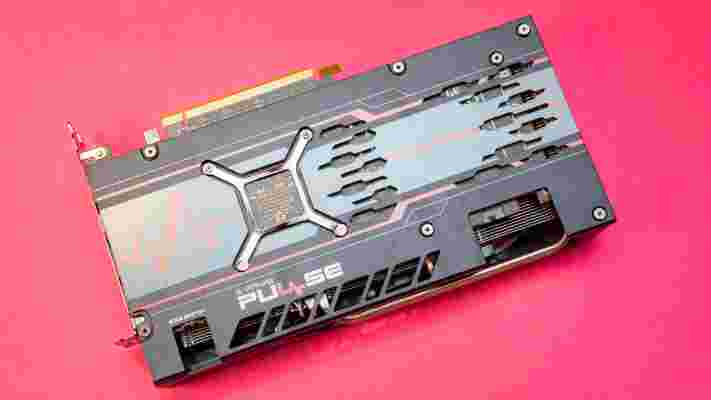
AMD vs Nvidia: price
Traditionally, AMD has always been known as the more affordable brand of graphics cards, and that's true to this day... to a point. Right now, especially in the mid-range, AMD has graphics cards like the Radeon RX 5500 XT, which provide excellent performance at the $199 (about £150, AU$280) price point. If your budget is around this level, AMD's generous helping of VRAM here means that you're getting much better performance in higher-spec games than Nvidia's equivalent GTX 1650 can offer.
Once you start going up the price stack, things change, however. At the top of the pile, AMD still comes out the winner in terms of affordability. The Radeon RX 6900 XT is much cheaper at $999 (£770, about AU$1,400) next to the Nvidia GeForce RTX 3090’s $1,499 (£1,399, around AU$2,030) and even the slightly more affordable RTX 3080, which will set you back $1,199 (£1,049, AU$1,949).
Let's not even talk about the MSI card in our Nvidia GeForce RTX 3090 Ti review , which will set you back nearly $2,000 (around £1,600 / AU$2,700).
Once to get to the lower high-end, however, things are no longer so black and white, with both AMD and Nvidia producing some of the best 1440p graphics cards on the market right now, though the pricing isn't always as strictly tied to performance as it used to be.
Both the AMD Radeon RX 6700 XT and the AMD Radeon RX 6800 sit a little higher on the dollar scale than their direct Nvidia rivals without delivering that much of a performance advantage.
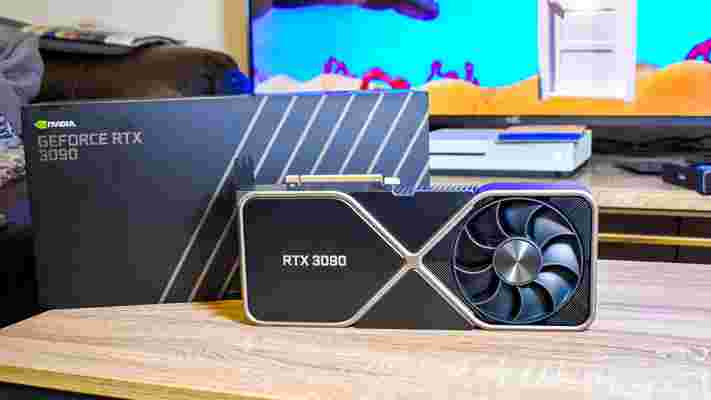
AMD vs Nvidia: performance
AMD’s Big Navi may not be the Nvidia killer it was first rumored to be, but a few of the cards in the line are certainly giving Nvidia some stiff competition. If you want to play the best PC games at 4K and get a solid 60+ fps frame rate, you're no longer stuck with Nvidia. Although with the Nvidia RTX 3080 Ti now officially out in the world, AMD is going to need to roll out a serious contender soon.
In 2022, you can get a graphics card that will power the best PC games at 1080p settings with something like the AMD Radeon RX 5600 XT or the Nvidia GeForce RTX 3060. If you want to play AAA games at 1440p with no compromises, both Team Red and Team Green have great options with the Radeon RX 6700 XT and the Nvidia GeForce RTX 3060 Ti.
The wider availability of graphics cards that can push pixels at these resolutions on a budget has made PC gaming much more accessible than ever before, and these upcoming generations have done the same for 4K gaming on PC, especially with the PS5 and Xbox Series X both costing much less than the price of a high-end gaming PC.
For 4K, both manufacturers have terrific offerings, with Nvidia rolling out the Nvidia GeForce RTX 3080, RTX 3080 Ti, and even the Nvidia GeForce RTX 3090, and AMD releasing the Radeon RX 6900 XT, which has been developed to go toe-to-toe with Nvidia's RTX 3090.
AMD vs Nvidia: exclusivity and features
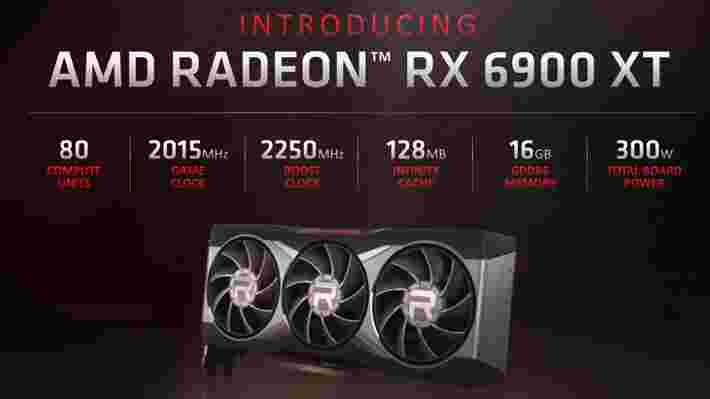
When it comes to features beyond just rendering games, Nvidia and AMD take much different approaches.
Typically, AMD's approach is much more consumer-friendly, as it releases features and technologies that can be used even on Nvidia graphics cards – though they will usually work best on AMD's own silicon.
Nvidia, on the other hand, likes to keep things close to its chest, launching features like DLSS that only work on its own platform. Team Green has been doing this for years, going back to PhysX. In fact, with that latter technology, you were even able to have a dedicated PhysX graphics card in your system to handle the computationally heavy workload.
Recently, however, Nvidia has launched a ton of features that are helpful outside of gaming, both as part of its ongoing Nvidia Studio driver program for creative and professional workloads, and just to aid people in their post-pandemic lives.
Most notably, with Ampere, you get Nvidia Broadcast, which is incredibly useful technology for pretty much everyone. With this program, you can replace backgrounds in any video conferencing app using AI. What's better is that you can also use it to filter out all background noise from your microphone while in a call, so you don't have to worry about disrupting that 10am meeting by drinking coffee and hurriedly eating breakfast.
Conversely, AMD is still very much centered on gaming with its mainstream graphics cards, and all features in its FidelityFX software suite introduced with RDNA are centered on delivering a better gaming experience. This includes things like contrast adaptive sharpening (CAS) that makes playing on a higher resolution display easier, and better ambient occlusion.
AMD vs Nvidia: which is better?
There’s so much to love about both Nvidia and AMD graphics. In the end, both of these companies rely on competition with each other to thrive. Suffice to say, the Nvidia vs AMD debate requires that you understand there’s a reason Radeon and GeForce GPUs are so similar in performance right now.
Each company is doing its best to keep up with the mindshare of the other, and that’s good for us. They’re basically fighting for our money, learning from each other’s mistakes and legislating marked improvements along the way.
It’s up to you who wins the fiery contest of Nvidia vs AMD, although we will say this: Nvidia is unmatched in the 4K market right now. If it helps any, the RTX 2080 Ti is probably your best bet if you want your PC to keep up with your Ultra HD display – as long as you can afford it. On the other hand, if you’re on a budget and looking into mid-range cards, Nvidia and AMD graphics cards will probably be about the same.
Meta’s Foo Fighters Super Bowl VR concert failed in the most basic ways
It’s safe to say that last night’s VR Foo Fighters concert didn’t go how Meta planned.
The hotly anticipated event promised to deliver a unique metaverse-fueled concert experience for Meta Quest 2 owners following yesterday’s Super Bowl . Given the popularity of similar concerts hosted by platforms like Fortnite , many expected this would be a massive PR win for Meta and its metaverse.
In reality, easily avoidable technical issues left many fans out in the cold.
The problem-ridden show was well-documented by Kent Bye on Twitter (the host of the Voices of VR Podcast). While his Twitter thread (which we recommend you read) highlighted some of the show’s best aspects, the majority of his tweets and the replies he received showed fans were unable to join due to confusing instructions (via UploadVR ).
Analysis: Nothing From Something
Most online events, particularly those on a grand scale like this Foo Fighters concert, allow people to enter a virtual waiting room before the officially posted start time – typically opening this up about 30 minutes before showtime.
This prevents there being a huge impact on the servers with users flooding in all at once, which reduces the likelihood of participants experiencing crashes.
Meta decided to opt for a different strategy. As reported by Bye, no one could join the event until the well-advertised 8pm PT start time rolled around, and the pre-recorded concert began just five minutes later at 8:05pm.
At 8pm, more than 61,000 eager people would have received an invite to join the Foo Fighter’s After Show (roughly the number of people who registered their interest ahead of time), and, unsurprisingly, the lobby crashed due to the influx of users who tried to join in one big push.
Bye highlighted that there were other ways to jump into the concert through the Horizon Venues app, but this seems to have not been an intuitive solution for users or issues persisted there. At its peak, the max number of VR viewers only reached around 13,000 – less than a quarter of the people who wanted to attend.
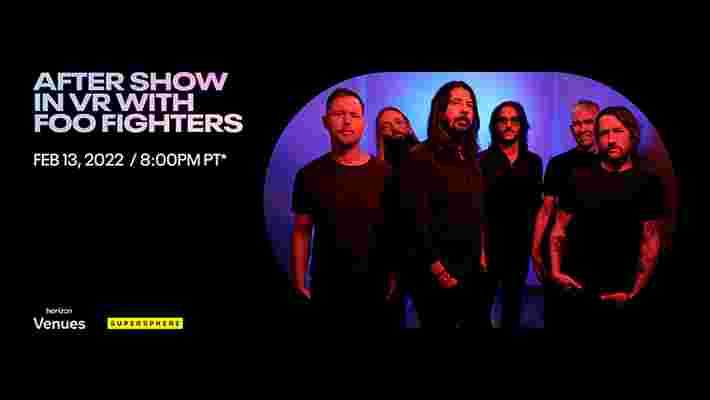
Quest users who were able to join found themselves watching a prerecorded video of a concert, with sub-optimal viewing angles and camera operators walking about the stage. This made some feel like the Foo Fighters After Show was not the VR-first experience that had been promised.
In response to complaints on Twitter the VP of Horizon, Vivek Sharma , cited that problems were caused by "unprecedented" demand. Adding that further opportunities to see the show would be available for those who missed out the first time.
However, we find these excuses to be pretty weak coming from a multi-billion dollar company – especially one that has been heavily advertising this concert and its VR services in the run-up to, and during, the Super Bowl .
This was a major chance for Meta to highlight the potential of its Horizon platform, and it sounds like it tried to make it a memorable free experience.
Attendees who found themselves watching in VR were treated to effects that immersed them in the showcase, and the 45-minute setlist gave Foo Fighters fans plenty of time to rave to tracks that are rarely played at live concerts.
Meta's show was much longer than we typically see for free concerts held in virtual spaces, and the company tried to maintain a high level of polish on the production – this should have been an easy win.
Unfortunately for Meta, yesterday’s shenanigans serve as a reminder that you have to walk before you can run. If Meta is going to keep up on this metaverse trend it needs to ensure it gets the basics of hosting online events right first.
Because what’s the point of hosting a concert if no one is around to hear it?